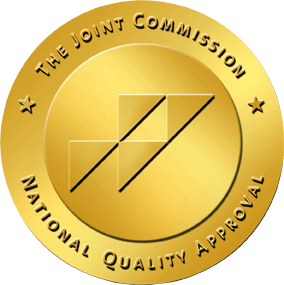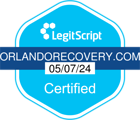Tramadol is a synthetic opioid medication used to treat mild to moderate pain. The drug is weaker than many other opioid pain medications, including morphine, hydrocodone and oxycodone. It was once considered less dangerous because it is less potent than other opioid drugs. However, it’s now clear that tramadol use still poses many risks, including addiction.
Tramadol Brand Name
Tramadol comes in several formulations. It can be sold as a generic drug or under several brand names. These include:
| Tramadol brand name | Dosage form |
| Qdolo | Short-acting liquid |
| Conzip | Long-acting capsule |
| Ultram | Short-acting tablet |
| Ultram ER | Long-acting tablet |
Tramadol also comes as a combination drug with acetaminophen. This combination is sold both as a generic drug and under the brand name Ultracet.
What Is Tramadol Used For?
Tramadol is a Schedule IV controlled substance prescribed for severe pain. Schedule IV drugs carry some risk of abuse, addiction and dependence. Although tramadol is relatively weak compared to many other opioids, it can still be dangerous. The risks are greater if you take too high of a dose.
Treatment Can Be Life Changing
Whether you are struggling with addiction, mental health or both, our expert team is here to guide you every step of the way. Don’t wait— reach out today to take the first step toward taking control of your life.
Is Tramadol Addictive?
Tramadol is addictive due to its effects on the central nervous system (CNS). Tramadol activates mu opioid receptors. The activation of these receptors leads to pain relief and potentially pleasurable effects.
Tramadol has mood-lifting properties because it increases the level of feel-good chemicals (neurotransmitters) in the brain. These chemicals include serotonin and norepinephrine. The feel-good effects can then trigger a reward cycle in the brain. This is how addiction develops. When someone is addicted to tramadol, they continue to use it despite negative effects.
People who use the drug can also develop dependence. With dependence, the body and brain adapt to the presence of tramadol. If someone is dependent on tramadol and stops using it suddenly, they’ll likely experience withdrawal symptoms.
Dangers of Tramadol Use
As a prescription-strength medication and narcotic, tramadol carries multiple warnings about its use. Staying safe while taking tramadol means carefully discussing the risks and benefits of the drug with your doctor. Some of the risks of tramadol use include:
- Developing a lower pain tolerance over time (opioid-induced hyperalgesia)
- Overdose, especially when tramadol is mixed with other CNS depressants like benzodiazepines
- Addiction, abuse and misuse if the drug is taken other than prescribed
- Neonatal opioid withdrawal syndrome if the drug is taken during pregnancy
- Drug interactions, which can increase the risk of side effects and potentially fatal complications like serotonin syndrome
- Allergic reactions, especially if the person has had an allergic reaction to other opioids
- Seizures, especially at high doses or in people with a history of seizures
- Suicidal thoughts and behaviors, particularly in those with a history of mood disorders
- Hormonal abnormalities involving the adrenal glands and reproductive systems
- Blood pressure abnormalities, especially in those who are susceptible to swings in blood pressure
- Gastrointestinal complications, particularly in those with a history of intestinal blockages
Signs of Tramadol Addiction
When a person begins to develop a tramadol addiction, signs and symptoms often begin to emerge. Friends and loved ones can begin to notice these symptoms, the presence of at least two of which can indicate a tramadol addiction:
- Taking more tramadol than intended or for a longer time than intended.
- Unsuccessful attempts to cut back on tramadol.
- Spending a lot of time seeking, taking, or recovering from tramadol.
- Cravings for tramadol.
- Failure to fulfill life obligations due to tramadol use.
- Interpersonal problems linked to tramadol use.
- Giving up other activities because of tramadol.
- Taking tramadol even when it is physically dangerous to do so.
- Taking tramadol even though you know doing so is harmful to you.
- Needing more tramadol to achieve the same effects as before.
- Withdrawal symptoms when you try to stop tramadol.
Developing two or more signs of a tramadol addiction is a sign that it’s time to seek help. Continuing to use tramadol can increase the risk of complications, including a potentially fatal overdose.
Tramadol Overdose
It is possible to overdose if you take too much tramadol. Unfortunately, tramadol overdose is one of the rare types of opioid overdose that is not completely reversible by naloxone (Narcan). This means that naloxone may not be able to stop someone from overdosing. For this reason, it is crucial to call 911 if you suspect someone has overdosed on tramadol.
Tramadol Overdose Symptoms
Tramadol overdose symptoms are generally similar to those of other opioids. Unlike other opioids, however, tramadol overdose carries a risk of seizures. The risk of this side effect increases with the dose of tramadol a person takes. Other overdose symptoms for tramadol include:
- Pinpoint pupils
- Cold, clammy or bluish skin
- Weakness or lethargy
- Dizziness when standing
- Rigid muscles
- Nausea and vomiting
- Irregular heartbeat
- Slowed or shallow breathing
- Unconsciousness or coma
A tramadol overdose is a medical emergency. If you suspect someone is overdosing on tramadol, you should call 911. Unlike with other opioids, a tramadol overdose is not completely reversible with naloxone (Narcan), and naloxone use can even lead to seizures when the person is overdosing on tramadol.
Tramadol Withdrawal
Using tramadol regularly and then suddenly stopping or greatly reducing your dose can result in withdrawal symptoms.
This happens because tramadol and other opioids can create physical dependence. When your body becomes dependent on tramadol, it gets used to the drug and adjusts to having it in your system. Therefore, when you stop tramadol abruptly, your body has to get used to not having it, causing tramadol withdrawal symptoms.
Tramadol withdrawal symptoms are triggered in an area of the brainstem called the locus coeruleus, which contains many opioid receptors. The cells in this part of the brain activate:
- The limbic system, or the emotional center of the brain
- The cerebral cortex, responsible for executive function
- The cerebellum, which controls physical activity like balance
The activation of these brain cells during tramadol withdrawal is a main cause of withdrawal symptoms.
Tramadol Withdrawal Symptoms
Tramadol’s withdrawal symptoms are similar to those of other opioids and include:
- Enlarged pupils
- Goosebumps
- Sweating
- Yawning
- Agitation
- Anxiety
- Runny eyes
- Runny nose
- Trouble sleeping
- Muscle aches
- Abdominal cramps
- Diarrhea
- Nausea and vomiting
Tramadol Withdrawal Timeline
The timeline for tramadol withdrawal symptoms can depend on whether you are taking the short- or long-acting form of the drug:
- Short-acting tramadol: Symptoms can start within 12 hours of the last dose, peak within 24 to 48 hours and improve over the next three to five days.
- Long-acting tramadol: Symptoms can start within 30 hours of the last dose and may last up to 10 days.
Orlando Tramadol Detox
Tramadol detox is when you stop using tramadol to let your body remove the drug. Since tramadol withdrawal symptoms can be tough to deal with on your own, it’s safest and most effective to do a medically-supervised detox.
During a medical detox, you get round-the-clock care and help from doctors and nurses. They’ll take care of any risky or uncomfortable withdrawal symptoms that might come up. This makes your detox as comfortable as possible.
Tramadol Addiction Treatment in Orlando
Medical detox is only the first step in treating tramadol addiction. Experts recommend undergoing a rehab program after detox, as it takes at least 90 days of treatment to reduce relapse risk.
Many different rehab options are available. Each is designed to meet different needs in treatment. Orlando Recovery Center Drug and Alcohol Rehab provides a full continuum of care that includes programs like:
- Inpatient rehab: This type of rehab is also known as residential rehab. During inpatient rehab, you live onsite at the treatment facility. This helps you avoid outside stressors and triggers in early recovery.
- Partial hospitalization program (PHP): In this program, which is a transition between inpatient and outpatient rehab, you come back to the rehab center regularly to be treated in an intensive setting.
- Intensive outpatient program (IOP): In this type of rehab, you live in a sober living environment but regularly come back to the facility for outpatient visits.
- Outpatient rehab: In outpatient rehab, you live in a supportive environment and continue your rehab. In contrast to intensive outpatient rehab, you spend less time in a rehab setting. This program is available at Orlando Outpatient Center.
If you or someone you love is struggling with tramadol addiction, help is available. Contact Orlando Recovery Center Drug and Alcohol Rehab today to learn more about tramadol addiction treatment programs that can work well for your situation.










